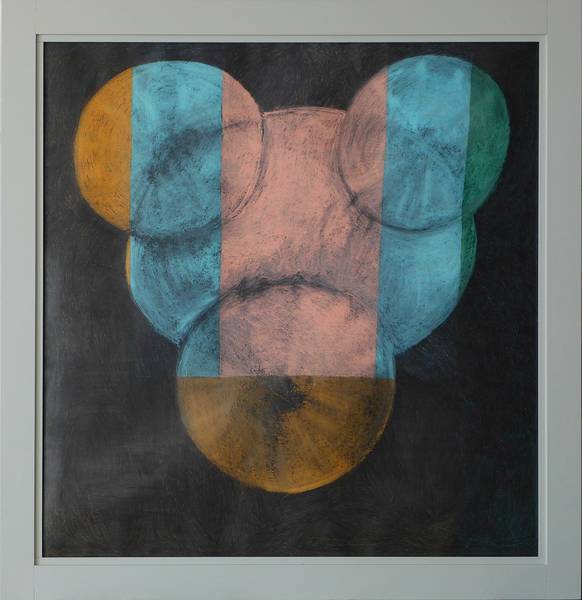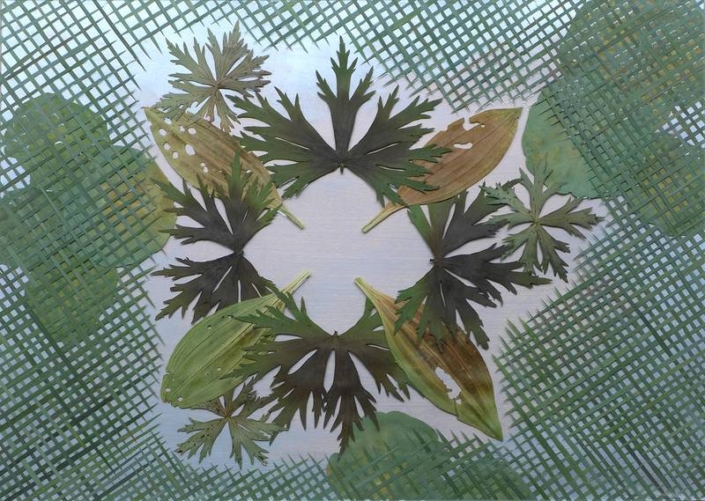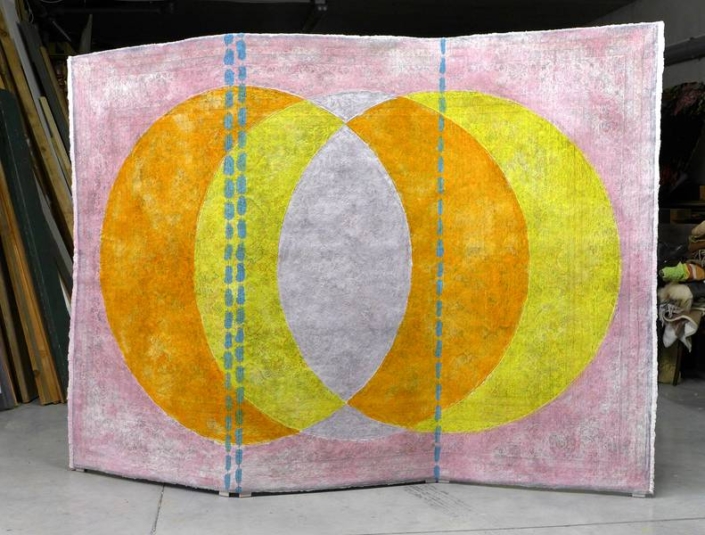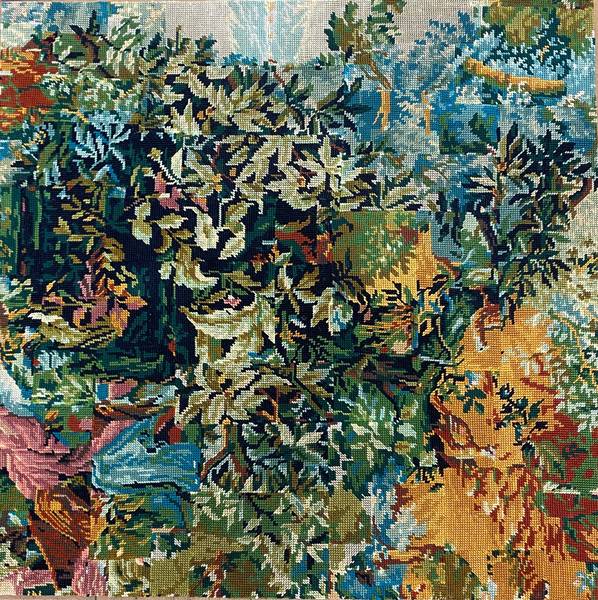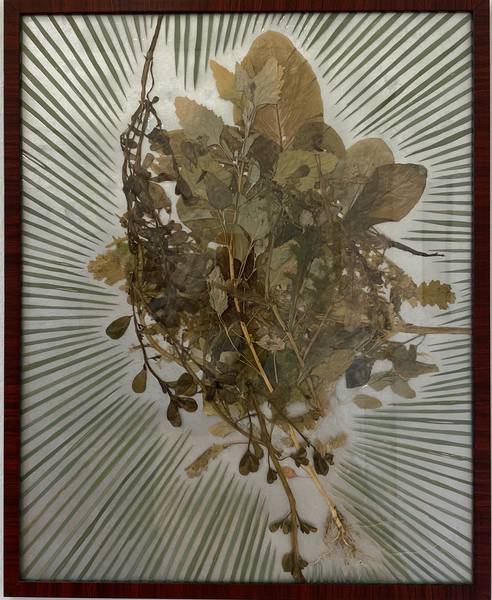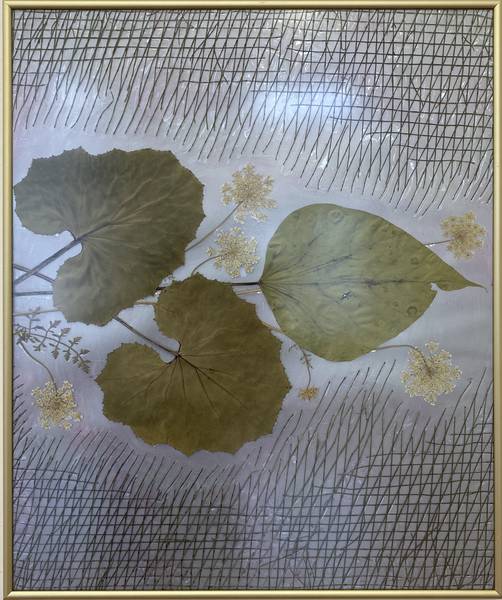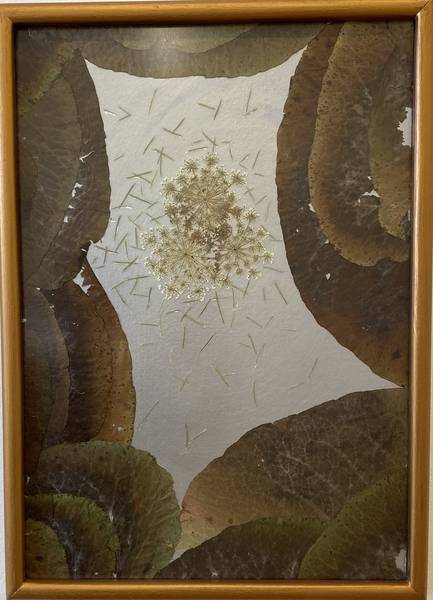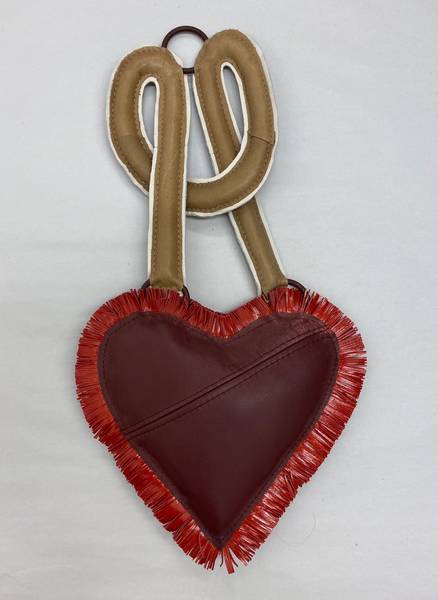Reto Leibundgut ‹Grace›
30.10. – 28.11.2020
Reto Leibundgut was born 1966 in Büren zum Hof, Bern. He lives and works in Basel and Thun. From the very beginning of Reto Leibundgut’s artistic activity he has exclusively concentrated on using secondhand and old material. He is a veritable addict of materials such as discarded wood, chipboards, veneer, leather, plastics, fabrics and carpets and everything is carefully collected and reutilized. The essence of his work is formed by the large collection and accumulation of material. The different materials are elaborately manufactured and placed into a new context. Cheap wood is ennobled and the vulgar becomes art. He not only recycles materials for his content but he uses images as well. He often uses old tapestries and stills from porn movies or photographs as models. By means of traditional, allegedly dusty techniques, such as intarsia or embroidery, he transfers content into a new dimension and questions familiar perceptions.
All of Reto Leibundgut`s works are of a puzzling straightforwardness. His art is using old materials and techniques but nevertheless is appearing very up-to-date. He is messing us about and is provoking with perfection an uneasiness, which can not be denied. On the one hand you are attracted to the meticulously crafted pieces, on the other hand you are repelled by their raw, rough way of making.
The women’s name series continues with Grace. With this the artist indicates the oscillation between favor and grace, the violent transformation and change of objects into a new, sublime form and appearance. Reto Leibundgut builds on his last exhibition in the gallery with a large piece of fabric. This time, a large carpet is not cut up and rearranged, but painted over with almost 5kg of paint and set up sculpturally as a screen in the room. He joined an old, cut up curtain to form a large-format material picture, the spiral arrangement of the ornaments developing an incredible dynamic power and visual suction. Another piece of work with chalk pens, new for Leibundgut, is spectacular: is it a stylized comic figure or is it psychedelic play of colors that impressively dominate the room from its large format?
Furthermore, for the first time as a group of works, new types of “herbaria” can be seen, meticulously composed still lifes of collected and dried grasses, flowers, herbs and leaves behind glass. In their refined design, they are reminiscent of drawings, geometric abstractions, which are given a charged, new metaphysical meaning with the medicinal herbs or poisonous plants that are sometimes used.

